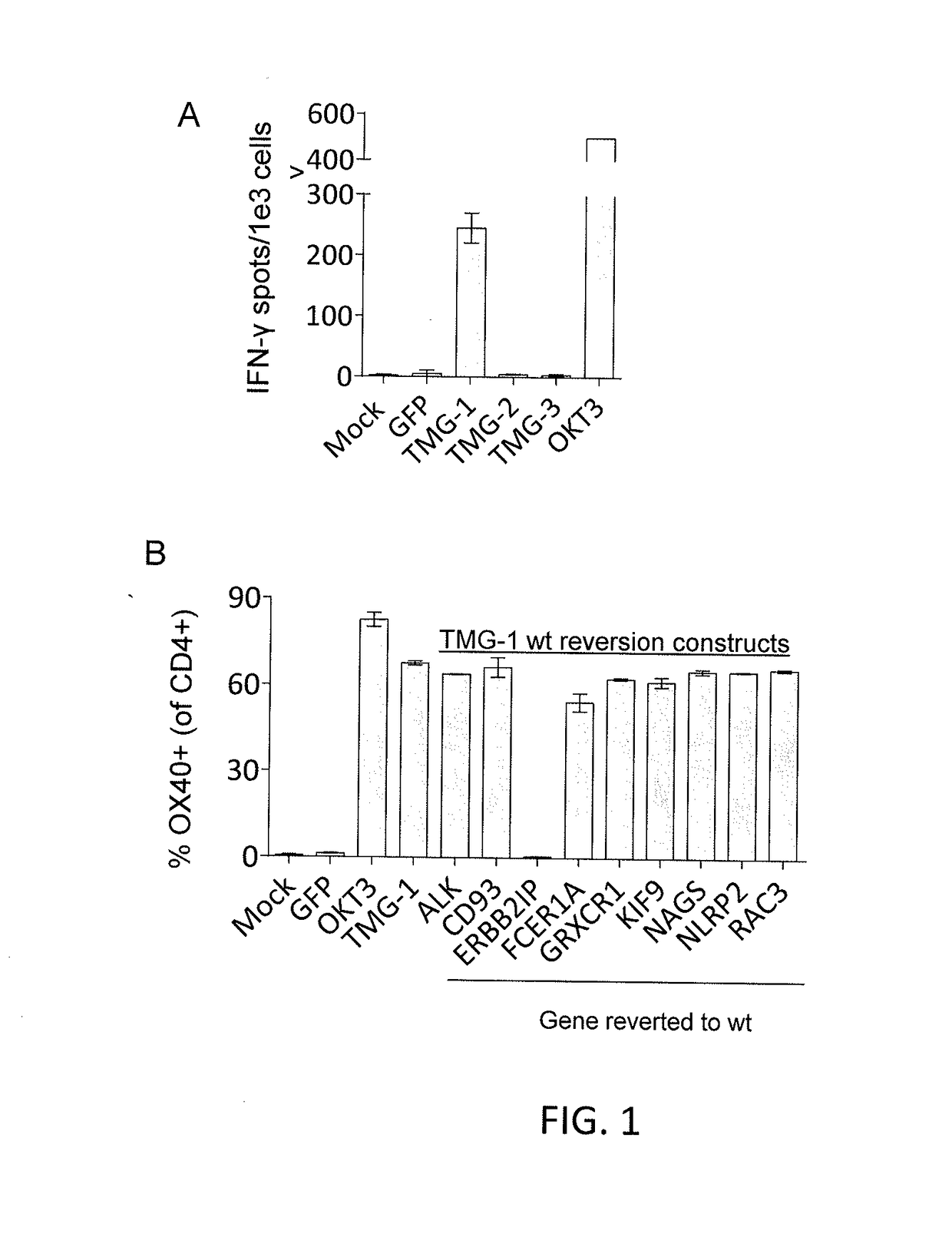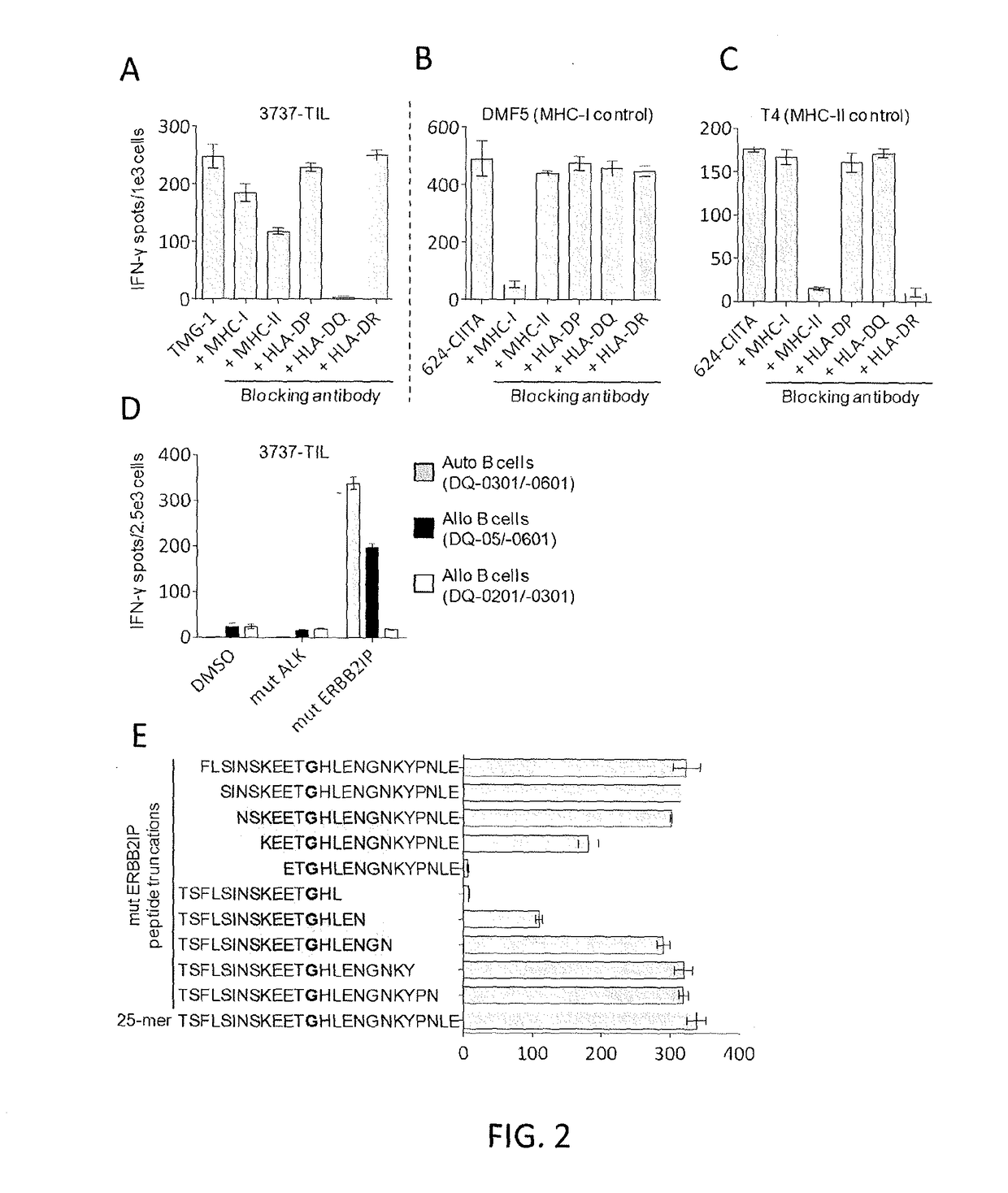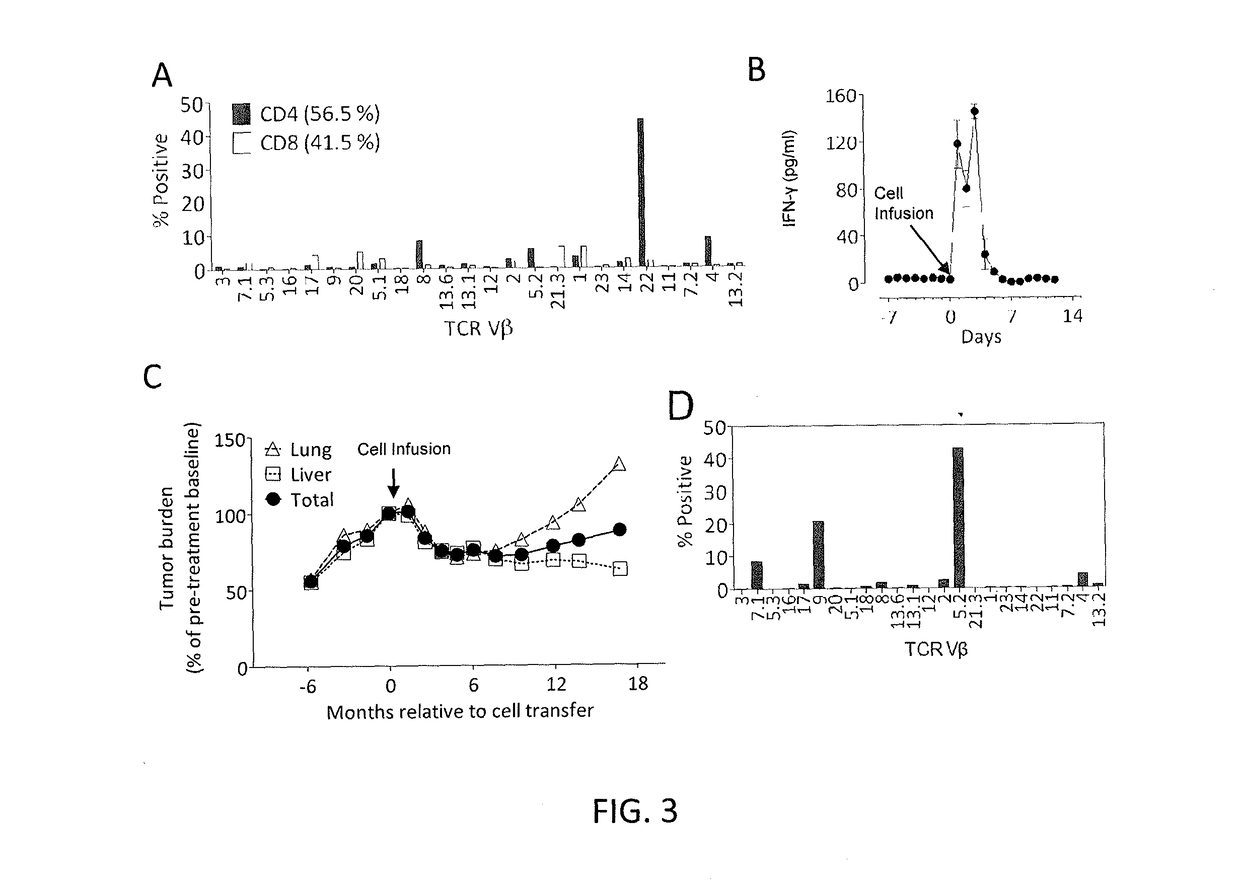Methods of isolating t cell receptors having antigenic specificity for a cancer-specific mutation
a technology of t cell receptors and specific mutations, which is applied in the field of isolating t cell receptors having antigenic specificity for cancer-specific mutations, can solve the problems of difficult identification and/or isolation of tcrs from patients, and hinders the successful use of tcr-engineered cells for the widespread treatment of cancer and other diseases
- Summary
- Abstract
- Description
- Claims
- Application Information
AI Technical Summary
Benefits of technology
Problems solved by technology
Method used
Image
Examples
example 1
[0104]This example demonstrates a method of identifying one or more genes in the nucleic acid of a cancer cell of a patient, each gene containing a cancer-specific mutation that encodes a mutated amino acid sequence.
[0105]A 43-year old woman with widely metastatic cholangiocarcinoma (Patient (Pt.) 3737) who progressed through multiple chemotherapy regimens was enrolled onto a TIL-based adoptive cell therapy (ACT) protocol for patients with gastrointestinal (GI) cancers. The clinical characteristics of patient 3737 are shown in Table 1.
TABLE 1MetastaticPriorPriorHarvestECOG+SexAgePrimarysitesTherapyIL-2site*StatusHLA-IHLA-IIF43IntrahepaticLungs, liverCisplatin +NoLung0A*26DRB1*0405cholangiocarcinomagemcitibine,B*38DRB1*1502(poorlygemcitibine,B*52DQB1*0301differentiated)taxotereC*12DQB1*0601DPB1*0401DPB1*10401*Harvest site for generation of TIL and for whole exomic sequencing.+Performance status: ECOG, Eastern Cooperative Oncology Group
[0106]Lung metastases were resected and used as a...
example 2
[0107]This example demonstrates a method of inducing autologous APCs of a patient to present the mutated amino acid sequence; co-culturing a population of autologous T cells of the patient with the autologous APCs that present the mutated amino acid sequence; and selecting the autologous T cells that (a) were co-cultured with the autologous APCs that present the mutated amino acid sequence and (b) have antigenic specificity for the mutated amino acid sequence presented in the context of a MHC molecule expressed by the patient.
[0108]For each mutation identified in Example 1, a mini-gene construct was designed that encoded for the mutated amino acid flanked on each side by 12 amino acids from the endogenous protein. Multiple mini-genes were synthesized in tandem to generate tandem mini-gene (TMG) constructs (Table 3). In Table 3, the underlining denotes mutated amino acids and neo-sequences encoded by point mutations, or nucleotide insertions or deletions. For splice-site donor mutati...
example 3
[0115]This example demonstrates that autologous open repertoire peripheral blood T cells genetically modified with the TCR-Vβ22 chain of the ERBB2IP-specific CD4+ T-cells identified in Example 2 matched with its α chain conferred specific reactivity to the mutated ERBB2IP peptide.
[0116]The clonality of the mutated ERBB2IP-specific CD4+ T-cells identified in Example 2 were characterized by sorting them after antigen-specific activation, using OX40 as a marker of activation. These cells were then bulk expanded and cloned by limiting dilution. A flow cytometry-based survey of the TCR-Vβ repertoire demonstrated that the bulk-expanded population was >95% Vβ22+, and that 10 / 11 clones assessed were purely Vβ22+. TCR sequence analysis revealed the same TCRβ V-D-J sequence in 6 / 6 Vβ22+ clones tested (Table 5), showing that the majority of the ERBB2IP-mutation reactive T cells was comprised of a dominant Vβ22+ T-cell clone.
TABLE 5V-D-J amino acidsequenceNumber ofV-D-J nucleotide sequence(CDR3...
PUM
| Property | Measurement | Unit |
|---|---|---|
| concentration | aaaaa | aaaaa |
| concentration | aaaaa | aaaaa |
| concentration | aaaaa | aaaaa |
Abstract
Description
Claims
Application Information
 Login to View More
Login to View More - R&D
- Intellectual Property
- Life Sciences
- Materials
- Tech Scout
- Unparalleled Data Quality
- Higher Quality Content
- 60% Fewer Hallucinations
Browse by: Latest US Patents, China's latest patents, Technical Efficacy Thesaurus, Application Domain, Technology Topic, Popular Technical Reports.
© 2025 PatSnap. All rights reserved.Legal|Privacy policy|Modern Slavery Act Transparency Statement|Sitemap|About US| Contact US: help@patsnap.com



